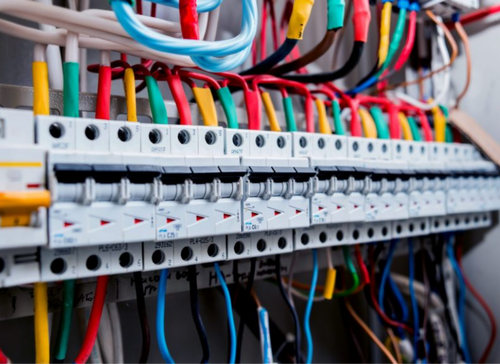Demystifying Electrical Setup: Recognizing Codes and Rules for a Legal and Safe Arrangement
In the world of electrical setup, adherence to codes and laws is extremely important to make certain both legality and safety and security. The complexities surrounding electrical job can be overwhelming, yet familiarizing oneself with the established standards is vital to navigating this field with confidence. By recognizing the ins and outs of the National Electric Code and regional building ordinance, people can assure that their setups satisfy required safety and security actions and are in conformity with the regulation. Nevertheless, the journey to debunking electric installation exceeds mere knowledge with policies; it necessitates an extensive grasp of how to implement safe electric practices effectively.
Importance of Electrical Codes
The adherence to electric codes is essential in making certain the safety and dependability of electric installations. Electrical codes function as a collection of requirements and standards that determine the appropriate design, setup, and upkeep of electric systems. These codes are developed to minimize the danger of electric threats, fires, and other safety worries that might emerge from faulty electrical work.

Moreover, electrical codes are regularly upgraded to incorporate brand-new innovations, best techniques, and security measures. Remaining updated with these codes is crucial for professionals in the electrical market to make sure that their job meets the most current safety and security standards. Ultimately, the value of electric codes lies in developing a secure and efficient electrical framework that profits both individuals and communities.
Secret Regulations for Safety And Security
Several essential regulations regulate the safety and security standards in electrical installments. One essential guideline is the National Electric Code (NEC), which offers standards for secure electrical layout, installation, and assessment to shield people and residential or commercial property from electric threats. The NEC covers aspects such as electrical wiring approaches, grounding, overcurrent defense, and equipment setup to make certain a safe electrical system.
An additional crucial regulation is the Occupational Security and Health And Wellness Management (OSHA) standards, which concentrate on the security of employees associated with electric installments (BRE Electrical). OSHA laws consist of needs for correct training, safety procedures, and personal protective equipment to avoid work environment mishaps and injuries
Furthermore, the International Electrotechnical Commission (IEC) standards intend to integrate electric setup policies on a global range. These criteria address problems like electrical equipment safety and security, electro-magnetic compatibility, and energy efficiency to advertise uniformity and security in electrical setups worldwide.
Conformity with these essential regulations is vital to ensure the safety and security and legitimacy of electrical installments, shielding both individuals and residential property from the risks linked with power.
Comprehending National Electric Code
Key laws such as the National Electrical over at this website Code (NEC) give vital guidelines for risk-free electrical layout, installation, and inspection to make sure the protection of people and residential or commercial property from electric risks. The NEC, additionally referred to as NFPA 70, is a thorough set of criteria for electrical installations that are upgraded every 3 years. It is developed by the National Fire Defense Association (NFPA) and is commonly taken on across the United States.
The NEC covers numerous aspects of electrical job, including circuitry approaches, grounding, overcurrent protection, and equipment setup. It intends to protect people and residential property by dealing with prospective threats related to electrical systems. Conformity with the NEC is commonly imposed by neighborhood authorities having territory (AHJs), such as building code officials and examiners.
Recognizing the NEC is crucial for electrical specialists, developers, and assessors to ensure that installations meet the needed safety and security needs. By adhering to the NEC guidelines, professionals can help avoid electrical mishaps and make sure the dependability of electric systems in property, business, and commercial setups.

Compliance With Neighborhood Building Regulations
Comprehending and adhering to imp source neighborhood building ordinance is necessary for guaranteeing the security and compliance of electric installations within a particular territory (BRE Electrical Melbourne). Local building codes differ from one community to another, and they are placed in place to guard the wellness of occupants and properties. These codes detail specific needs for electrical setups, such as the kind of electrical wiring to be used, placement of electrical outlets, grounding techniques, and load capabilities. By abiding by local building ordinance, electricians can guarantee that installments are done correctly and satisfy the necessary security criteria.
When it comes to electric installments, failure to comply with neighborhood structure codes can result in major consequences. Non-compliant installations might position safety threats, raise the danger of electrical fires, and lead to pricey penalties or legal concerns.
Making Sure Safe Electrical Practices
Practicing strict adherence to established safety and security methods is critical in the area of electric setups to reduce prospective risks and ensure the well-being of people and residential or commercial properties. Safety in electrical job includes different aspects, beginning with the correct training of workers involved in installation, upkeep, and repair service. By prioritizing safe techniques, electrical installations can operate successfully while lessening the possibility of accidents or damages.
Conclusion
To conclude, adherence to electrical codes and regulations is critical for making sure the security and validity of electric installations. Recognizing the published here National Electric Code and compliance with neighborhood building regulations are important for a secure configuration. By adhering to these guidelines and exercising risk-free electric methods, people can avoid potential dangers and ensure the appropriate functioning of their electrical systems.